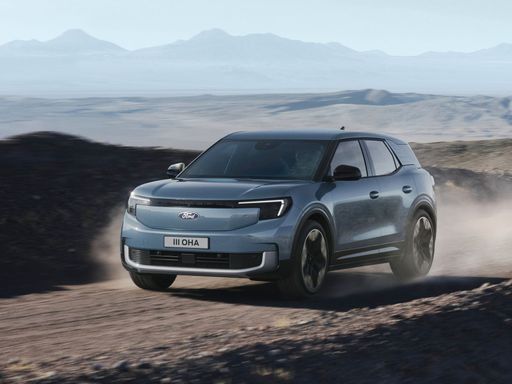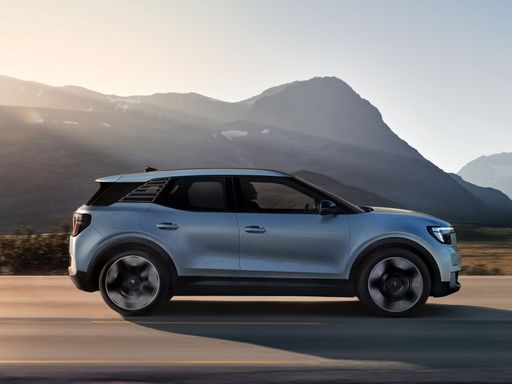Ford Explorer EV vs Kia EV4 Hatchback – Performance, range & efficiency compared
Everyday use, family trips or long-distance drives – here’s where the differences show.
Discover whether Ford Explorer EV or Kia EV4 Hatchback fits your lifestyle better.
Costs and Efficiency:
Price and efficiency are often the first things buyers look at. Here it becomes clear which model has the long-term edge – whether at the pump, the plug, or in purchase price.
Kia EV4 Hatchback has a hardly perceptible advantage in terms of price – it starts at 32200 £, while the Ford Explorer EV costs 34200 £. That’s a price difference of around 1980 £.
In terms of energy consumption, the advantage goes to the Ford Explorer EV: with 14.50 kWh per 100 km, it’s barely noticeable more efficient than the Kia EV4 Hatchback with 14.90 kWh. That’s a difference of about 0.40 kWh.
As for range, the Kia EV4 Hatchback performs barely noticeable better – achieving up to 625 km, about 23 km more than the Ford Explorer EV.
Engine and Performance:
Under the bonnet, it becomes clear which model is tuned for sportiness and which one takes the lead when you hit the accelerator.
When it comes to engine power, the Ford Explorer EV has a clearly perceptible edge – offering 340 HP compared to 204 HP. That’s roughly 136 HP more horsepower.
In acceleration from 0 to 100 km/h, the Ford Explorer EV is distinct quicker – completing the sprint in 5.30 s, while the Kia EV4 Hatchback takes 7.40 s. That’s about 2.10 s faster.
In terms of top speed, the Ford Explorer EV performs minimal better – reaching 180 km/h, while the Kia EV4 Hatchback tops out at 170 km/h. The difference is around 10 km/h.
There’s also a difference in torque: Ford Explorer EV pulls convincingly stronger with 679 Nm compared to 283 Nm. That’s about 396 Nm difference.
Space and Everyday Use:
Whether family car or daily driver – which one offers more room, flexibility and comfort?
Both vehicles offer seating for 5 people.
In curb weight, Kia EV4 Hatchback is hardly perceptible lighter – 1811 kg compared to 1908 kg. The difference is around 97 kg.
In terms of boot space, the Ford Explorer EV offers barely noticeable more room – 450 L compared to 435 L. That’s a difference of about 15 L.
In maximum load capacity, the Ford Explorer EV performs slight better – up to 1422 L, which is about 7 L more than the Kia EV4 Hatchback.
When it comes to payload, Ford Explorer EV clearly perceptible takes the win – 585 kg compared to 459 kg. That’s a difference of about 126 kg.
Who wins the race?
The Ford Explorer EV proves to be outperforms in nearly all aspects and therefore becomes our DriveDuel Champion!
Ford Explorer EV is the better all-rounder in this comparison.

Ford Explorer EV
Ford Explorer EV
The Ford Explorer EV marks a significant step forward in the brand's journey towards electrification, offering an impressive blend of performance and sustainability. This modern SUV features a sleek design complemented by advanced technology that enhances the driving experience. With a focus on comfort and innovation, the Explorer EV aims to redefine family travel for the electric age.
details @ electricexplorer.fordpresskits.com
@ electricexplorer.fordpresskits.com
 @ electricexplorer.fordpresskits.com
@ electricexplorer.fordpresskits.com
 @ electricexplorer.fordpresskits.com
@ electricexplorer.fordpresskits.com
Kia EV4 Hatchback
The Kia EV4 Hatchback paves the way for a sleek and efficient driving experience, capturing attention with its modern design and eco-friendly performance. Built with comfort and sustainability in mind, this hatchback redefines electric mobility for urban explorers and suburban commuters alike. Inside, the EV4 boasts a spacious and tech-savvy interior, offering drivers and passengers a seamless blend of innovation and practicality.
details

|
|
|
|
|
Costs and Consumption |
|
|---|---|
|
Price
34200 - 48800 £
|
Price
32200 - 42400 £
|
|
Consumption L/100km
-
|
Consumption L/100km
-
|
|
Consumption kWh/100km
14.5 - 17.2 kWh
|
Consumption kWh/100km
14.9 - 16.2 kWh
|
|
Electric Range
360 - 602 km
|
Electric Range
440 - 625 km
|
|
Battery Capacity
52 - 79 kWh
|
Battery Capacity
58.3 - 81.4 kWh
|
|
co2
0 g/km
|
co2
0 g/km
|
|
Fuel tank capacity
-
|
Fuel tank capacity
-
|
Dimensions and Body |
|
|---|---|
|
Body Type
SUV
|
Body Type
Hatchback
|
|
Seats
5
|
Seats
5
|
|
Doors
5
|
Doors
5
|
|
Curb weight
1908 - 2179 kg
|
Curb weight
1811 - 1910 kg
|
|
Trunk capacity
445 - 450 L
|
Trunk capacity
435 L
|
|
Length
4468 mm
|
Length
4430 - 4450 mm
|
|
Width
1871 mm
|
Width
1860 mm
|
|
Height
1630 - 1639 mm
|
Height
1485 mm
|
|
Max trunk capacity
1417 - 1422 L
|
Max trunk capacity
1415 L
|
|
Payload
561 - 585 kg
|
Payload
445 - 459 kg
|
Engine and Performance |
|
|---|---|
|
Engine Type
Electric
|
Engine Type
Electric
|
|
Transmission
Automatic
|
Transmission
Automatic
|
|
Transmission Detail
Reduction Gearbox
|
Transmission Detail
Reduction Gearbox
|
|
Drive Type
Rear-Wheel Drive, All-Wheel Drive
|
Drive Type
Front-Wheel Drive
|
|
Power HP
170 - 340 HP
|
Power HP
204 HP
|
|
Acceleration 0-100km/h
5.3 - 8.7 s
|
Acceleration 0-100km/h
7.4 - 7.8 s
|
|
Max Speed
160 - 180 km/h
|
Max Speed
170 km/h
|
|
Torque
310 - 679 Nm
|
Torque
283 Nm
|
|
Number of Cylinders
-
|
Number of Cylinders
-
|
|
Power kW
125 - 250 kW
|
Power kW
150 kW
|
|
Engine capacity
-
|
Engine capacity
-
|
General |
|
|---|---|
|
Model Year
2024 - 2025
|
Model Year
2025
|
|
CO2 Efficiency Class
A
|
CO2 Efficiency Class
A
|
|
Brand
Ford
|
Brand
Kia
|
What drive types are available for the Ford Explorer EV?
The Ford Explorer EV is available as Rear-Wheel Drive or All-Wheel Drive.
The prices and data displayed are estimates based on German list prices and may vary by country. This information is not legally binding.
